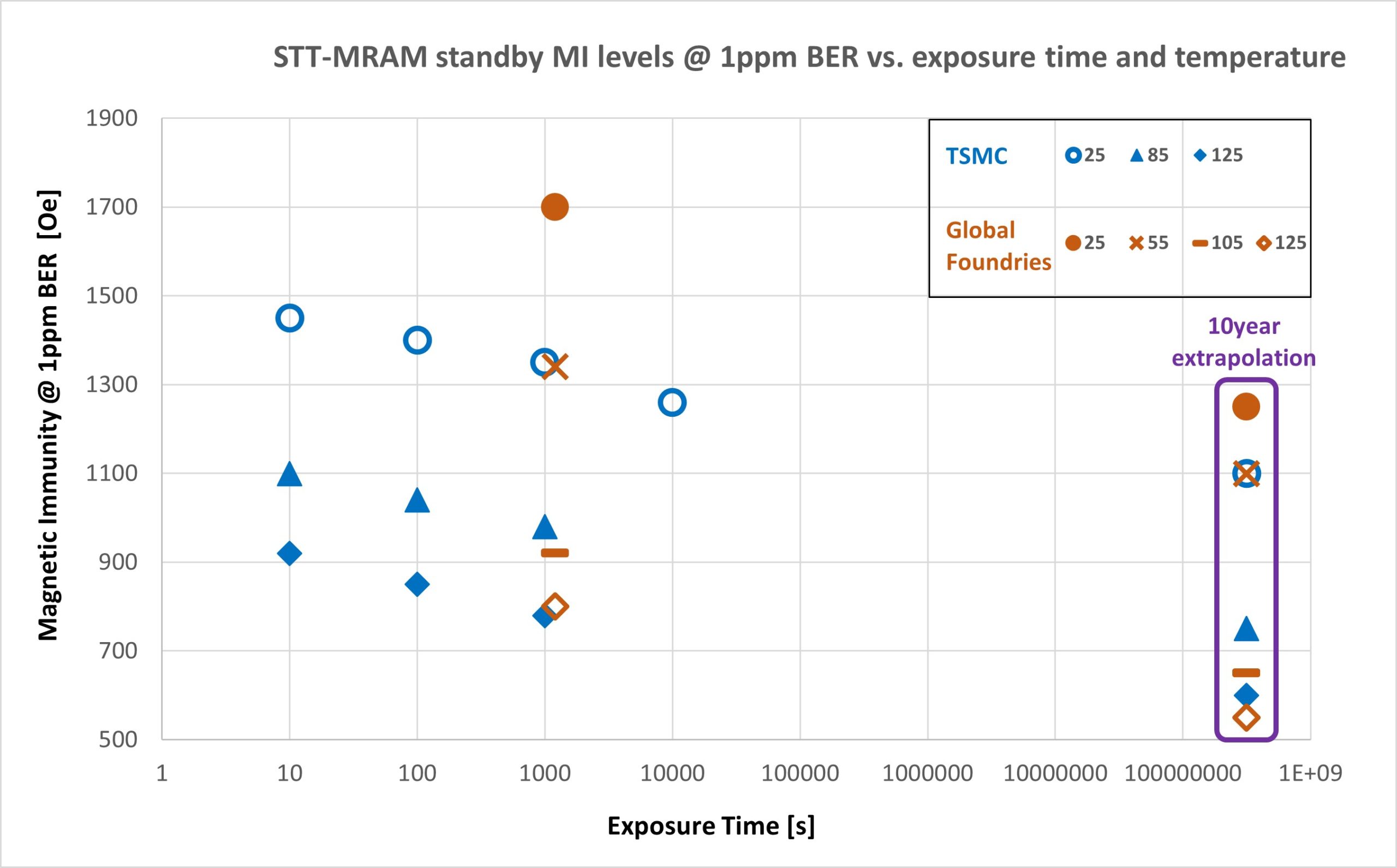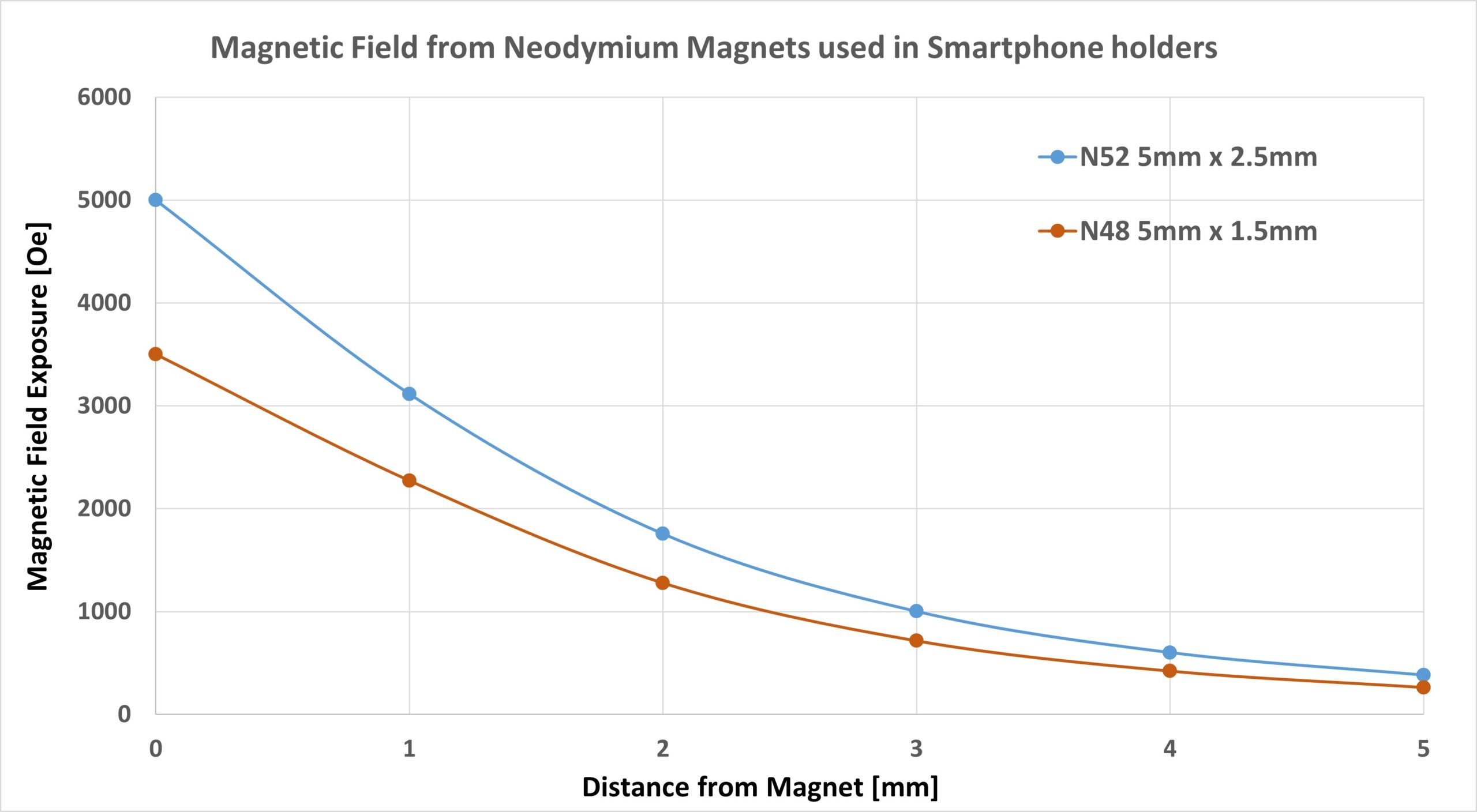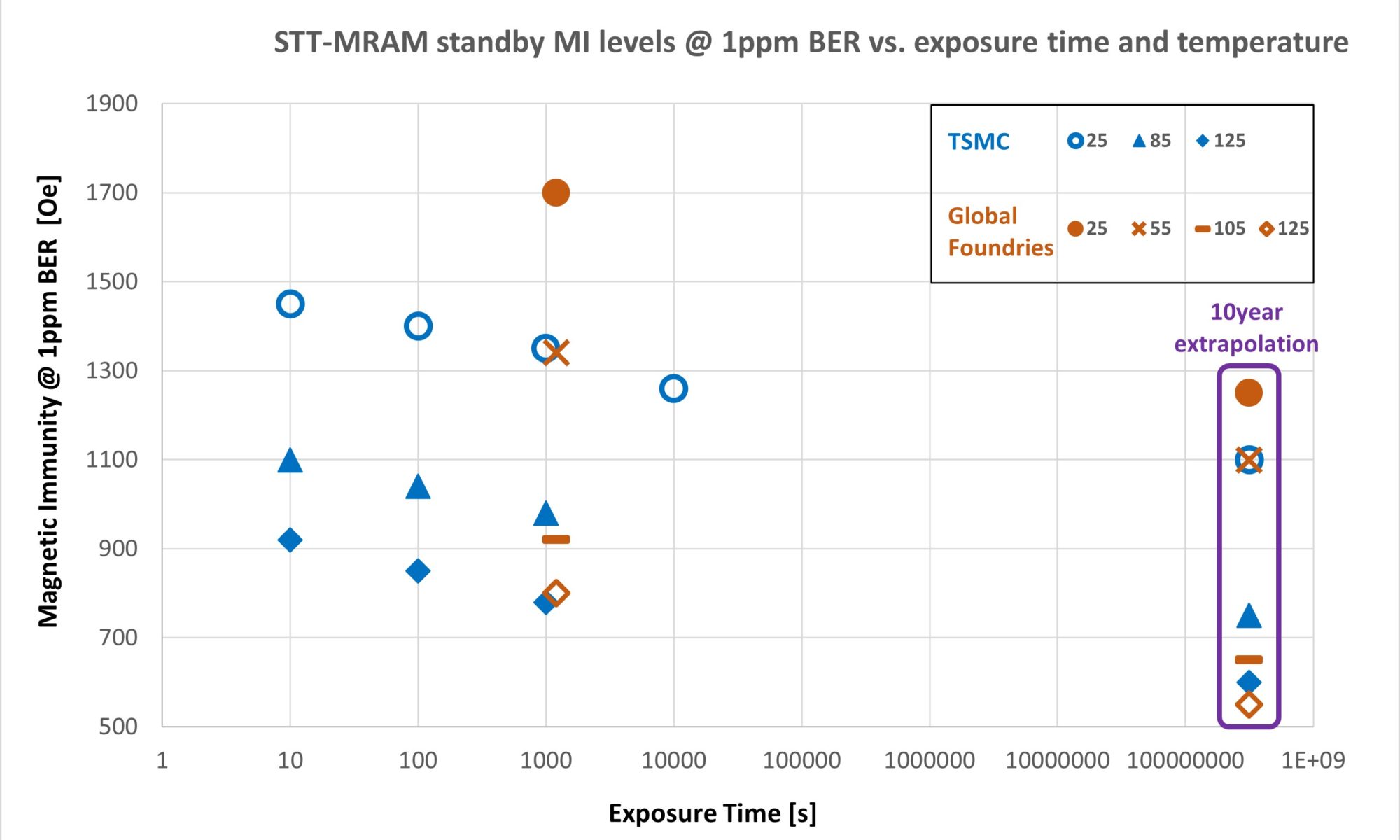The main threat for the wide adoption of MRAM memories continues to be their lack of immunity to magnetic fields. MRAM magnetic immunity (MI) levels has seen significant research over the years and new data is continuously published from the main MRAM vendors.
This data, however, is rarely compared to magnetic field exposure scenarios which will occur in consumer applications. The study will show the state of magnetic immunity reported from the most prominent players with focus on Spin Transfer Torque MRAM (STT-MRAM). Then two specific exposure scenarios are evaluated, and the results are compared to the reported MI levels from suppliers. Finally some improvements are proposed.
Embedded STT-MRAM Magnetic Immunity Overview
TSMC and GlobalFoundries have published a set of standby MI levels vs. exposure time and temperature for their most robust macros, and provided an extrapolation to 10-year exposure levels. Below these levels are plotted again adjusted to 1ppm bit error rate (BER).

Figure 1: MRAM MI levels from GlobalFoundries and TSMC with 10-year extrapolation
While both companies show ability to withstand more than 1000 Oe @ RT in standby mode, they also show a significant degradation over temperature. Both have also published active magnetic immunity levels, which are 2-4x lower (250-500 Oe) depending on conditions. Depending on your application, the active mode may be the worst-case threat scenario.
DC Field Exposure from Rare Earth Magnets
Exposure from powerful rare-earth magnets are regarded as the worst-case scenario, as these are now widely used in various product cases and smartphone holders.
As an example of this scenario, we used data for two Neodymium magnets with a surface field strength of 5000 Oe (N52) and 3500 Oe (N48) and plotted the field strength at various distances.

Figure 2: Neodymium magnetic field vs. distance to components
Although the magnetic field quickly deteriorates, components within 2-3 mm of the magnet surface are still experiencing field strength above what MRAM technology is capable of handling today.
AC Field Exposure from Wireless Charging Pads
Wireless chargers are becoming more powerful to a point where they could threaten MRAM data integrity when charging.
The Federal Communications Commission (FCC) specifies a maximum permissible exposure (MPE) to magnetic fields generated by such devices, and specifies a compliance limit for devices at 50% this MPE level. Below are plotted the converted exposure levels for a 15W wireless QI charger, a 5W wireless QI charger, as well as the FCC compliance limit with a square law attenuation wrt. distance.

Figure 3: Estimated magnetic field exposure from wireless chargers & FCC compliance limit
It is clear that the concerns wrt. wireless chargers are much lower than was the case for static magnetic fields. Still for some MRAM offerings, the level of 100-200 Oe at close range may impact memory reliability in active mode.
Conclusion
Judging by the data presented, STT-MRAM memories are not yet able to guarantee reliable performance in these common use-cases. When integrating STT-MRAM these effects must be taken into consideration and discussed with your memory vendor.
To fully mitigate the risk from these scenarios, the MRAM technology needs to improve current standby and active MI levels by 2-4x. MRAM suppliers should be encouraged to report MI levels in a uniform or standardized way and to develop standard reliability flows for quantifying MI levels for their customers.
As there are no good alternative for embedded memory in advanced nodes, the incentive for vendors to create such standardized data to mitigate this risk should continue to grow.
The full study including references to all material used is available at the resource page on MemXcell.com.
Share this post via:








Quantum Computing Technologies and Challenges